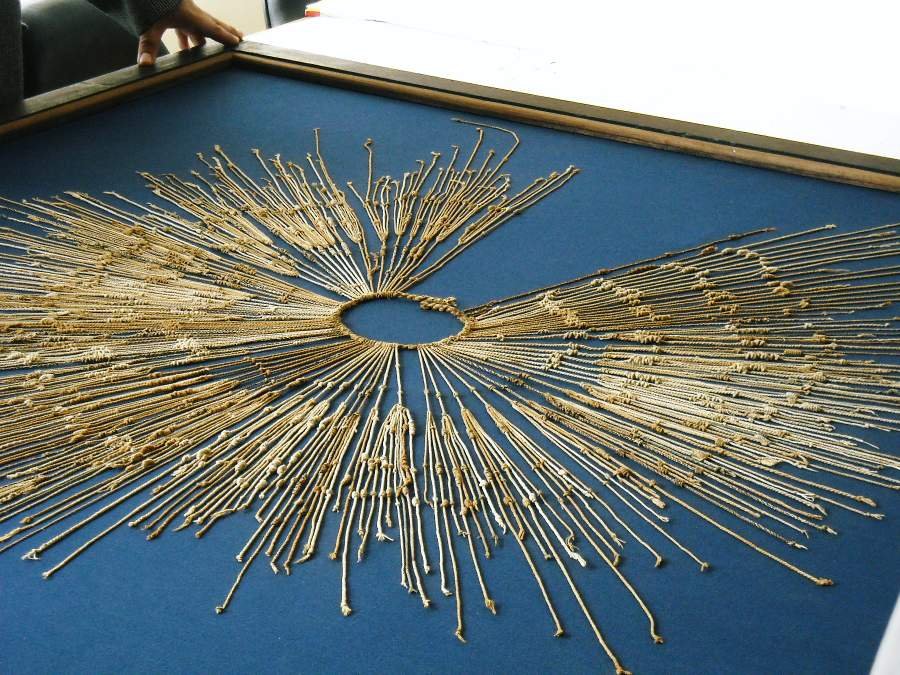With the use of knots, this Inca invention shows us that images are not the only thing that communicates.

The Inca Empire was the largest and most powerful empire during pre-Columbian America. They partly inhabited the territories current territories of Ecuador, Bolivia, Colombia, and Argentina, but they were mainly settled in Peru in the Cuzco region. Among its main characteristics are a strengthened army, the possession of gold, their sophisticated textile techniques, the cultivation of potatoes and corn, the raising of alpacas, and the creation of a particular communication system based on ropes and knots, which they called “quipu”.

Personally, this last fact caught my attention, since I had never seen anything like it. By not having a written language, but merely oral, the quipu was the method used by them to record information. This was a very practical system for the Incas because it was portable. Moreover, it was also versatile, since with it they kept official and trade records, as well as being used to tell stories. The quipu consisted of a horizontal rope or a wooden bar to which ropes of different colors were tied, and these ropes had knots on them. Every detail about these ropes and knots, such as their colors, position, quantity, size, and type, had a specific meaning. For example, green indicated conquest, red represented a warrior, blue identified water, yellow was for gold, black was for time, and so on.
With the arrival and conquest of the Spaniards, the use of the quipus was abolished and many were destroyed because it was considered that they were “a thing of the devil”. Today there are less than a thousand quipus that have been found and have survived through the centuries. These are in museums all around the world, and some belong to private collections.

It is usual that when studying the subject of communication systems of ancient civilizations we see many that, although they are interesting, are usually similar in the sense that they generally include the representation of an image or idea through drawings. For instance, the Egyptian hieroglyphs. However, the Inca proposal is a drastically different one. This made me thing think about how amazing it is that there are so many ways to solve a problem, but we are so used to the same thing that we let ourselves be guided by the flow without allowing ourselves to consider other alternatives. That was the reflection to which learning about the quipu led me, and I think that nurturing ourselves of different perspectives, cultures, and sources of information, nourishes us as designers and gives us tools to create more authentic pieces, to let ourselves “think outside the box”.
References:
| Cartwright, M. (2014, May 08). Quipu [Quipu]. (E. S. Grill, Translator). World History Encyclopedia. from https://www.worldhistory.org/trans/es/1-12797/quipu/ Uriarte, M. (2020, November 02). Incas. Caracteristicas.co. from https://www.caracteristicas.co/incas/#ixzz78GMBnUdZ Quipu. (2021, August 30). Wikipedia. from https://es.wikipedia.org/wiki/Quipu#Localización_actual_de_los_quipus_sobrevivientes |
